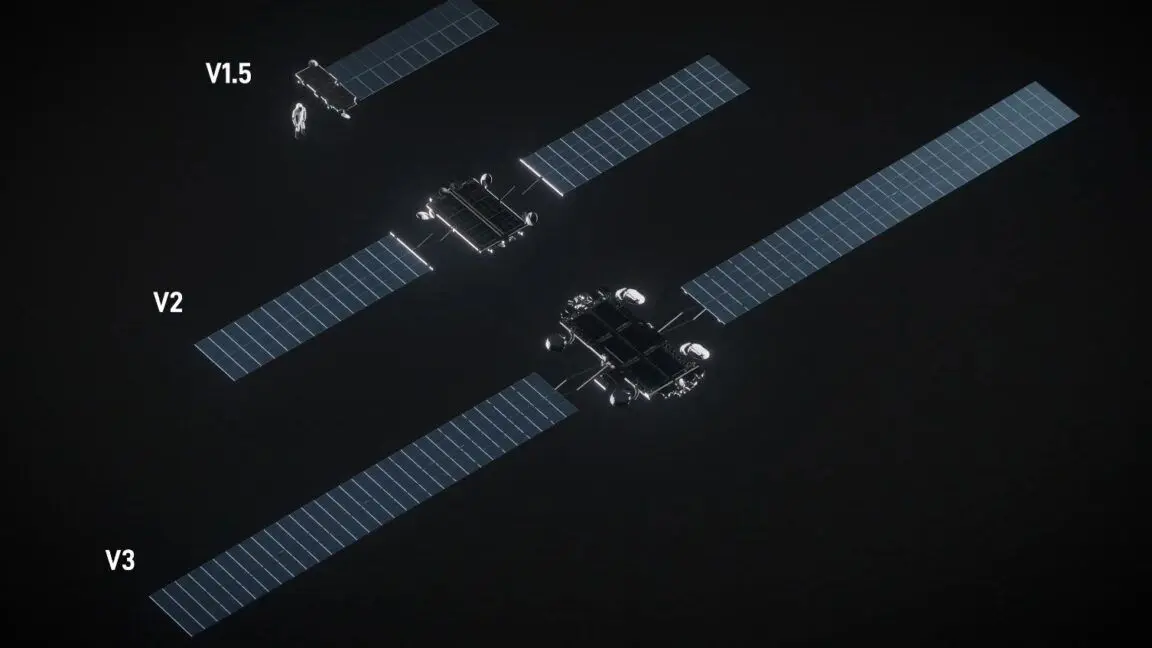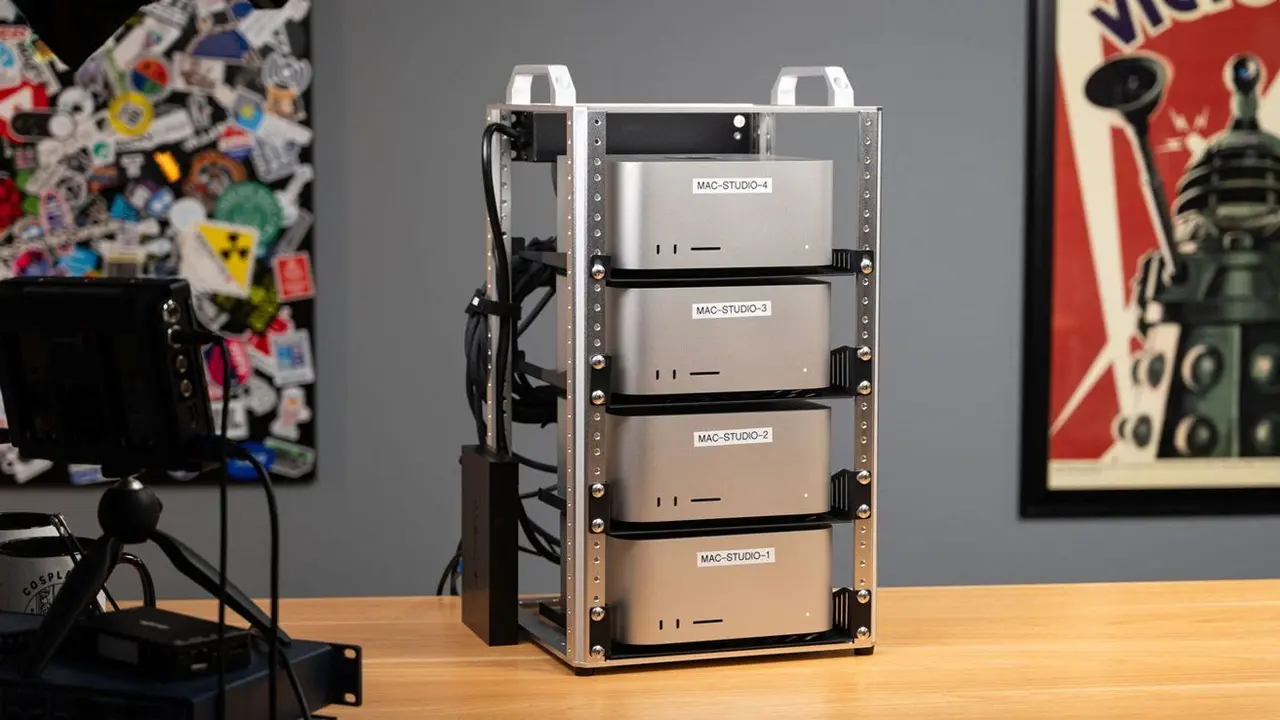Jeff Bezos Envisions Gigawatt Data Centers in Space Within 20 Years
8 Sources
8 Sources
[1]
Jeff Bezos envisions space-based data centers in 10 to 20 years -- could allow for natural cooling and more effective solar power
Jeff Bezos predicts that within the next 10 to 20 years, extremely large-scale data centers will be constructed in orbit, where continuous access to solar power and relatively easy cooling could allow them to surpass Earth-based facilities in efficiency and cost, reports Reuters. However, building a data center in space will require a number of breakthroughs as it is commercially unfeasible today. "One of the things that is going to happen in the next -- it is hard to know exactly when, it is 10+ years, and I bet it is not more than 20 years -- we are going to start building these giant gigawatt data centers in space," said the Amazon and Blue Origin founder during a discussion with Ferrari chairman John Elkann at Italian Tech Week in Turin, Italy. The global rise of AI and cloud-based technologies is pushing the limits of existing computing infrastructure in terms of power supply and cooling, which has led companies to consider new options for locating these massive data centers. Some believe it makes sense to locate data centers on ships, others think about constructing them in northern countries, there are even thoughts about placing them deep in the ocean. According to Bezos, outer space provides a solar power source that is not subject to atmospheric or weather disruptions. Without clouds, rain, or night cycles, energy collection becomes far more consistent, which makes solar power practical for 24/7 applications. Meanwhile, temperatures in space vary from -120 degrees celsius in direct sunlight to -270 C in the shadow, which greatly simplifies cooling. This could make orbital clusters ideal for intensive computational tasks like AI model training, which demand constant and massive power input. It is technically feasible to generate about 1 GW of continuous electrical power in Earth orbit using solar panels, but the scale is immense, creating massive difficulties. Solar constant on earth is around 1,366W/m2, it should be around the same on the Earth orbit. High-efficiency triple-junction solar cells can convert about 35% of that into electricity, and after accounting for system-level losses like wiring, thermal inefficiency, and other factors, the net usable output is typically 300 - 410 W/m² depending on various factors. That means the project would need 2.4 to 3.3 million square meters of solar panel area -- roughly equivalent to a square array between 1.56 and 1.82 km per side. Such an array would likely weigh 9,000 - 11,250 metric tons just for the photovoltaic material, not including structural supports, power routing, and control electronics. Lifting 9,000 - 11,250 metric tons of space-grade solar panels into low Earth orbit (LEO) using today's best commercial launch vehicles -- such as SpaceX's Falcon Heavy with an up to 64 metric tons payload -- would cost between $13.7 and $17.1 billion at an optimistic ~$1,520/kg, assuming near-max efficiency in payload mass per launch. However, at a more conservative cost of over $2,000/kg, that cost will increase to $25+ billions and will require well over 150 launches only for solar panels. In addition, nearly all of the input power becomes heat, which must be radiated into space, which means millions of square meters of radiators to handle 1+ GW of thermal load. How much will such radiators weigh and how much will cost lifting them to space is something that remains to be seen, but since radiators tend to weigh more than solar panels, we are talking about tens of billions of dollars here. Last but not least, actual AI servers equipment also weighs tens of thousands of metric tons and costs tens of billions of dollars even on earth. So while possible in principle, the logistical, economic, and engineering challenges of assembling and maintaining such an orbital power system are enormous.
[2]
Jeff Bezos Predicts We'll Have Gigawatt Data Centers in Space in 20 Years
When he's not battling bugs and robots in Helldivers 2, Michael is reporting on AI, satellites, cybersecurity, PCs, and tech policy. Don't miss out on our latest stories. Add PCMag as a preferred source on Google. As major tech companies race to build massive data centers for next-generation AI, Amazon founder Jeff Bezos is looking further ahead, with plans to one day place data centers in space. At Italian Tech Week 2025, Bezos was asked to predict what the world might look like in the years to come. In response, the billionaire discussed his rocket company, Blue Origin, before talking about the construction of data centers in Earth's orbit. "It's hard to know exactly when -- it's 10 plus years, but I bet it's not more than 20 years -- we're going to start building these giant gigawatt data centers in space," he said. The idea may sound far-fetched. However, others, including startup Lumen Orbit, have also discussed operating data centers from orbit, citing the abundant solar energy and cooling capabilities. Bezos mentioned the same energy benefit. "So these giant training clusters, those will be better built in space because we have solar power there, 24/7. And the solar power there, there are no clouds, no rain, no weather," he added. "We will be able to beat the cost of terrestrial data centers in space in the next couple of decades." Orbital data centers could also help address the soaring energy costs associated with building them on Earth. OpenAI, Meta, and Elon Musk's xAI are all planning to erect massive data centers across the US, which will require multiple gigawatts of energy and the construction of numerous new power plants. (For perspective, the Hoover Dam generates about 2 gigawatts.) Presumably, the same data centers could beam data back and forth using lasers. However, launching and operating them from orbit is easier said than done. Bezos is essentially betting that Blue Origin will one day have reusable rockets large enough to haul data centers into space. Currently, the company's heavy-lift launch vehicle, New Glenn, is still preparing for its second launch; the craft has also not yet achieved a successful booster landing. Still, Bezos is predicting we won't just have data centers in space, but people living there as well. "In the next kind of couple of decades, I believe there will be millions of people living in space. That's how fast this is going to accelerate," he said.
[3]
Bezos dreams of orbital datacenters powered by the sun
Aspiring Bond villain believes the best place to train our AI overlords is in orbit Amazon founder and executive chair Jeff Bezos says that, within two decades, gigawatt-scale datacenters powered by a continuous stream of photons from the sun will fill Earth's orbit. Bezos' prediction might sound like he's auditioning for the role of Hugo Drax in the inevitable Moonraker reboot, but the billionaire businessman really believes that spaceborne datacenters are going to be a thing and may eventually outperform their terrestrial counterparts. "One of the things that's going to happen in the next - it's hard to know exactly when, it's 10 plus years, and I bet it's not more than 20 years - we're going to start building these giant gigawatt datacenters in space," he said during a fireside chat with Ferrari and Stellantis chair John Elkann, at Italian Tech Week. Of course, to make this dream a reality, we're going to need heavy lift rockets capable of shuttling the various components to and from orbit, which Bezos' Blue Origin just so happens to be building. However, even if we can make putting bit barns in orbit economical, there is no shortage of challenges to overcome. Datacenters are massively complex facilities. Even with an abundant supply of power, an orbital datacenter would still need a way to reject a gigawatt of thermal energy through radiation. For reference, the ISS's radiators are capable of rejecting about 70 kilowatts of thermal energy. Bit barn operators will also have to contend with bit-flips on a fairly regular basis unless the hull can be sufficiently hardened against charged particles from the sun and cosmic rays from the outer reaches of space -- standard ECC probably isn't going to cut it. Many of these challenges are already being tackled at a smaller scale. HPE has been working on the problem for several years now with Spaceborne and Spaceborne-2. These systems have made several trips to the International Space Station already and have tested things like edge compute storage and recovery on long-term space missions. The first unit, launched in 2017, experienced several failures during its 615-day mission aboard the ISS. As HPE's Dr Eng Lim Goh told The Register at the time, one of the machine's four redundant power supplies and nine of its 20 SSDs encountered issues. Axiom Space has also launched a similar compute prototype to the ISS. In August, the startup's shoebox-sized Data Center Unit One (AxDCU-1) arrived on the space station. However, all of these designs have been tiny power-optimized designs and are nothing like the kinds of data stations Bezos is describing. Orbital datacenter advocates expect full scale facilities will require high degrees of automation, including the extensive use of robots to perform maintenance or upgrades. But while most of the challenges facing spaceborne datacenters are engineering and economic in nature, there's one that can't easily be overcome, at least not without bending the laws of physics: latency. We think about the speed of light being practically instantaneous, but it's very much not. Depending on how high up these datacenters are parked, access latencies will be on the order of 20-40ms for low Earth orbit and upwards of 600ms for Geostationary satellites. That's an eternity compared to terrestrial datacenter networks. While these facilities may be untenable for certain workloads, for other less-latency-sensitive, more power-hungry workloads, they may be ideal, Bezos argues. "These giant training clusters, those will be better built in space, because we have solar power there, 24/7 ... There are no clouds and no rain, no weather," Bezos said. "We will be able to beat the cost of terrestrial datacenters in space in the next couple of decades." ®
[4]
Jeff Bezos Has a Plan to Curb AI's Carbon Footprint: Send Data Centers to Space
Jeff Bezos believes that for artificial intelligence to keep expanding, data centers will eventually need to move off the Earth and into space. Speaking at the Italian Tech Week in Turin last week, the Amazon and Blue Origin founder said that the best way to reduce the environmental impact of these facilities was to move them off-planet. Bezos' concern is shared by many in the sciences and wider environmental movement. As artificial intelligence grows, scientists are worried Earth's resources might not be able to keep up. In turn, Bezos predicted that humans will start building gigawatt-scale orbital data centers within the next 10 to 20 years. “Space will end up being one of the places that keeps making Earth better,†he said. “It already has happened with weather satellites. It’s already happened with communication satellites. The next step is going to be data centers and other kinds of manufacturing.†As tech giants pour billions into AI, data center construction is skyrocketing. These facilities house the computing infrastructure needed to train and deploy AI models, and require huge amounts of energy and water to operate. An April report by the International Energy Agency estimates that global water consumption for data centers is currently around 560 billion liters per year, and could rise to 1,200 billion liters per year by 2030. As for energy, the report found that global electricity consumption from data centers has grown about 12% per year since 2017, reaching 415 terawatt-hours in 2024. That’s enough to power tens of millions of homes. The concept of orbital data centers as a potential solution isn’t new. Bezos and other figureheads of the tech industry have touted the idea as an effective way to support the AI boom without further driving up water and electricity demand. Here’s how it would work. In space, there’s no shortage of solar energy and extremely cold temperatures. The ability to leverage these constantly available resources would, in theory, allow us to power enormous data centers without needing water and electricity from Earth. "These giant training clusters, those will be better built in space, because we have solar power there, 24/7,†Bezos said. “There are no clouds and no rain, no weather. We will be able to beat the cost of terrestrial data centers in space in the next couple of decades." What’s more, orbital data centers would help reduce air and water pollution on Earth. Traditional data centers emit greenhouse gases and other pollutants that harm the environment and public health, but in space, these emissions would not directly impact our planet. In the past, Bezos has touted the idea of moving other industrial work off Earth in order to preserve our planet, including setting up factories in orbit. Some companies are already working to make Bexos' vision a reality. In March, Florida-based firm Lonestar Data Holdings announced that it had successfully tested a miniature data center the size of a book in space. The “Freedom†data center payload hitched a ride to the Moon aboard Intuitive Machines’ Athena Lunar Lander, launched by a SpaceX Falcon 9 rocket earlier this year. That said, we still have a long way to go before we can build the massive facilities Bezos is talking about. Such a feat presents numerous challenges that could take many decades to overcome. But as AI becomes a fixture of our everyday lives, coming up with innovative ways to mitigate its Earthly impact will be essential.
[5]
Jeff Bezos says orbital data centers will be the 'next step' for space ventures that make Earth better
What's the next killer app for the final frontier? According to Jeff Bezos, it's a future fleet of gigawatt data centers, flying in orbit and powered by sunlight. Bezos -- who founded the Amazon retail giant as well as his privately held Blue Origin space venture -- pointed to the prospects for orbital data centers last Friday during a fireside chat at Italian Tech Week 2025 in Turin. He cast the technology as the most cost-efficient way to satisfy the tech industry's need for more power to fuel advances in artificial intelligence. But don't expect cloud computing to leave Earth behind immediately. Bezos estimated that the transition from Earth-based to space-based data processing would take more than 10 years. "I bet it's not more than 20 years," he said. "We're going to start building these giant gigawatt data centers in space. So, these giant training clusters, those will be better built in space, because we have solar power there, 24/7." Space-based solar arrays wouldn't face the weather-related limitations that terrestrial solar-power installations have to live with. Once the arrays are in orbit, the power is basically free. "We will be able to beat the cost of terrestrial data centers in space in the next couple of decades," Bezos said. "Space will end up being one of the places that keeps making Earth better. It already has happened with weather satellites. It's already happened with communication satellites. The next step is going to be data centers and other kinds of manufacturing." Several commercial ventures are already working on plans to put data centers in space, including Seattle-based StarCloud and Sophia Space, a California-based startup with significant Seattle connections. Houston-based Axiom Space tested an Amazon Web Services Snowcone cloud-computing device aboard the International Space Station in 2022. This year, Axiom is gearing up to send its first Orbital Data Center nodes into low Earth orbit. During Friday's fireside chat, Bezos talked about topics ranging from advice for entrepreneurs ("The thing you always go back to is those customer needs") to the repercussions of an AI investment bubble ("When the dust settles and you see who are the winners, society benefits from those inventions. ... The benefits to society from AI are going to be gigantic"). Bezos turned to his agenda for space commercialization toward the end of the talk. Here are a few more tidbits from that part of the fireside chat:
[6]
From Earth to orbit: Jeff Bezos outlines bold vision for space-based data centres
Jeff Bezos projects space data centres within two decades. These facilities will operate with energy efficiency and reliability. They will use constant solar power. Bezos sees this as a next step for space infrastructure. Orbital centres will support the computing needs of AI development. This model aims for computing sustainability. Launch costs and radiation present challenges. Amazon founder and executive chair Jeff Bezos has projected that data centres could be built in space within the next 10 to 20 years. Speaking at the Italian Tech Week in Turin, he stated that space-based facilities could outperform those on Earth in terms of energy efficiency and reliability due to access to constant, uninterrupted solar power, as per a report by TOI. Bezos described orbiting data centres as a logical next step in the evolution of space infrastructure, which he said has already enhanced life on Earth through satellite-based weather monitoring and global telecommunications. He likened the current artificial intelligence (AI) boom to the internet surge of the early 2000s, noting that while speculation is to be expected, the long-term societal benefits of AI are significant. Bezos argued that orbital data centres would enjoy unique operational advantages over terrestrial facilities. These include continuous solar energy availability, freedom from weather-related disruptions, and the absence of environmental constraints found on Earth. He suggested that space-based facilities could operate at "unprecedented efficiency" and envisions "gigawatt-scale" systems capable of managing the intense computational needs of AI development. According to Bezos, such centres could transform how large AI models are trained, how data is stored, and how cloud services are delivered. Positioning them in orbit would reduce energy consumption, cooling requirements, and environmental impacts, presenting a more sustainable model for the technology sector. He referenced satellites as proof of concept, noting their contributions to weather forecasting, GPS, and communication systems. In his view, data centres are the next practical application of space technology. He also pointed to potential future uses such as in-orbit manufacturing and research that requires extreme environmental conditions. Despite the potential, Bezos acknowledged several challenges. Launching heavy infrastructure into space remains costly, and carries risks such as launch failure or damage during transport. Maintenance is complicated by limited human access, making reliable robotic servicing essential. Radiation in space also poses a risk to electronic equipment, requiring robust system designs to withstand harsh conditions. Nonetheless, Bezos expressed confidence that progress in space transportation, solar power collection, and robotics will ultimately make orbital data centres a viable and cost-effective option. Bezos compared the rapid growth of AI to the early internet era, noting that while hype is inevitable, the underlying technological progress is real. He stated that AI holds the potential to improve sectors including healthcare, education, finance, and manufacturing. He argued that orbital data centres could support this progress by providing the extensive computational power required for AI research and training. According to Bezos, the benefits of AI are expected to be broadly distributed, fostering global innovation, job creation, and long-term technological advancement. (With inputs from TOI) (You can now subscribe to our Economic Times WhatsApp channel)
[7]
Data centers in space? Jeff Bezos says it's possible
Amazon founder Jeff Bezos predicted on Friday gigawatt-scale data centers will be built in space within the next 10 to 20 years and that continuously available solar energy meant they would eventually outperform those based on Earth. Speaking at the Italian Tech Week in Turin, Bezos also compared the surge in artificial intelligence to the internet boom of the early 2000s, urging optimism despite the risk of speculative bubbles. The concept of orbital data centers has gained traction among tech giants as those on Earth have driven up demand for electricity and water to cool their servers.
[8]
Jeff Bezos makes wild prediction about data centers as energy demand...
Amazon founder and executive chair Jeff Bezos said Friday gigawatt-scale data centers will be built in space within the next 10 to 20 years, predicting they would eventually outperform Earth-based ones thanks to the abundance of uninterrupted solar energy. The number of these enormous centers, which store computing infrastructure, is growing exponentially as the world increasingly uses artificial intelligence and cloud computing, driving a surge in demand for electricity and water to cool their servers. "One of the things that's going to happen in the next - it's hard to know exactly when, it's 10 plus years, and I bet it's not more than 20 years - we're going to start building these giant gigawatt data centers in space," Bezos said during a fireside chat with Ferrari and Stellantis Chairman John Elkann at the Italian Tech Week in Turin. The concept of space-based data centers is gaining traction among large tech companies, as the energy needs to maintain such operations on Earth are growing sharply. "These giant training clusters, those will be better built in space, because we have solar power there, 24/7. There are no clouds and no rain, no weather," Bezos said. "We will be able to beat the cost of terrestrial data centers in space in the next couple of decades." Bezos said the shift to orbital infrastructure is part of a broader trend of using space to improve life on Earth. "It already has happened with weather satellites. It has already happened with communication satellites. The next step is going to be data centers and then other kinds of manufacturing," he said. However, hosting data centers in space has its own challenges, including cumbersome maintenance, limited scope for upgrades and high costs of launching rockets as well as the risk of failed rocket launches.
Share
Share
Copy Link
Amazon and Blue Origin founder Jeff Bezos predicts the construction of massive, solar-powered data centers in Earth's orbit within the next two decades. This ambitious plan aims to address the growing energy demands of AI while potentially reducing environmental impact on Earth.
Bezos' Vision for Orbital Data Centers
Jeff Bezos, the founder of Amazon and Blue Origin, has unveiled an ambitious vision for the future of data processing and artificial intelligence. Speaking at Italian Tech Week 2025, Bezos predicted that within the next 10 to 20 years, we will witness the construction of massive, gigawatt-scale data centers in Earth's orbit
1
2
.
Source: New York Post
The Case for Space-Based Data Centers
Bezos argues that space offers unique advantages for powering and cooling these facilities:
- Continuous Solar Power: Orbital data centers would have access to uninterrupted solar energy, free from atmospheric interference or day-night cycles
1
3
. - Natural Cooling: The extreme temperature variations in space (-120°C in sunlight to -270°C in shadow) could simplify cooling processes
1
. - Cost-Effectiveness: Bezos believes that within a couple of decades, space-based data centers could become more economical than their terrestrial counterparts
2
4
.

Source: ET
Addressing AI's Growing Energy Demands
The push for orbital data centers comes as a response to the escalating energy requirements of artificial intelligence and cloud computing:
- Current Trends: Global electricity consumption from data centers has grown by about 12% annually since 2017, reaching 415 terawatt-hours in 2024
4
. - Future Projections: Water consumption for data centers could rise from 560 billion liters per year to 1,200 billion liters by 2030
4
.
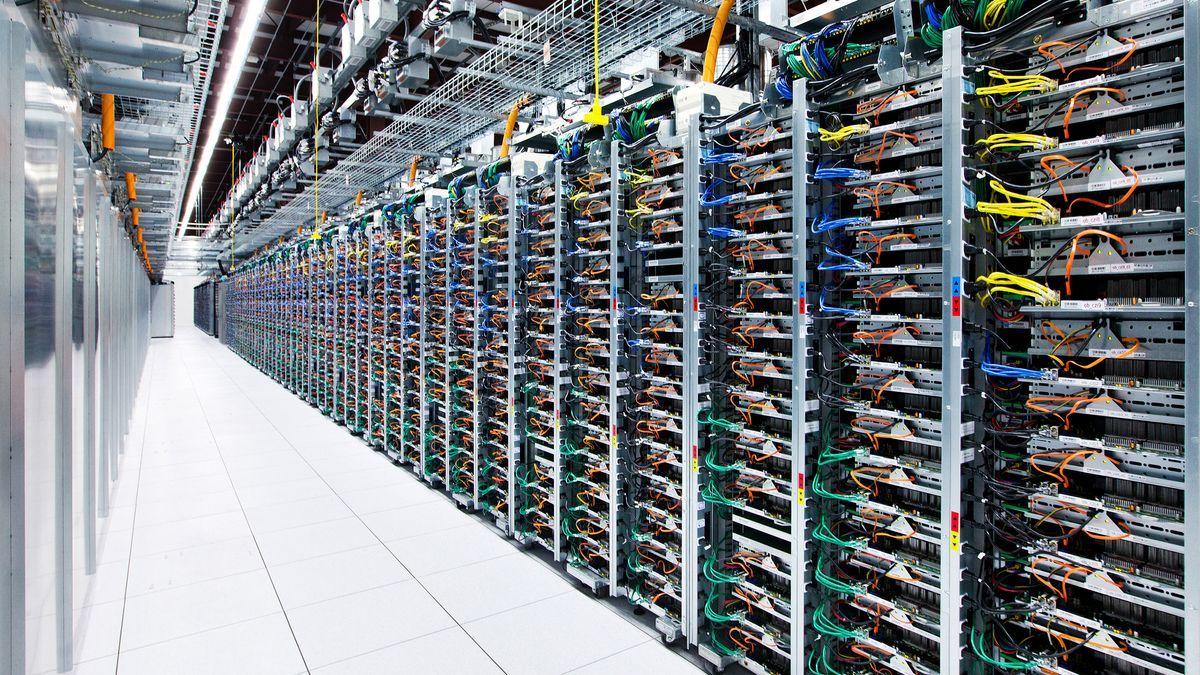
Source: Tom's Hardware
Technical Challenges and Considerations
While the concept is promising, several significant hurdles must be overcome:
- Launch Costs: Lifting thousands of tons of solar panels and equipment into orbit remains prohibitively expensive with current technology
1
. - Radiation Shielding: Orbital facilities would need robust protection against solar radiation and cosmic rays
3
. - Latency Issues: Depending on orbit height, data transfer delays could range from 20-40ms in low Earth orbit to 600ms for geostationary satellites
3
.
Related Stories
Industry Developments and Prototypes
Several companies are already exploring the potential of space-based computing:
- Lonestar Data Holdings successfully tested a book-sized miniature data center in space
4
. - HPE has been running experiments with its Spaceborne computer systems on the International Space Station
3
. - Axiom Space launched a shoebox-sized prototype, AxDCU-1, to the ISS
3
.
Environmental Implications
Bezos suggests that moving data centers to space could help reduce the environmental impact of AI and computing on Earth:
- Reduced Resource Consumption: Orbital facilities could decrease the demand for water and electricity on Earth
4
. - Pollution Mitigation: Space-based centers would not directly contribute to air and water pollution on our planet
4
.
As the tech industry continues to invest heavily in AI, the concept of orbital data centers represents a bold attempt to address the growing environmental concerns associated with data processing. While significant technological and economic challenges remain, Bezos' vision aligns with a broader trend of looking to space for solutions to Earth's resource limitations.
References
Summarized by
Navi
[1]
[3]
Related Stories
Musk and Bezos ignite space race as orbital data centers emerge to solve AI's energy crisis
10 Dec 2025•Technology

AI Trained in Space as Tech Giants Race to Build Orbiting Data Centers Powered by Solar Energy
11 Dec 2025•Technology
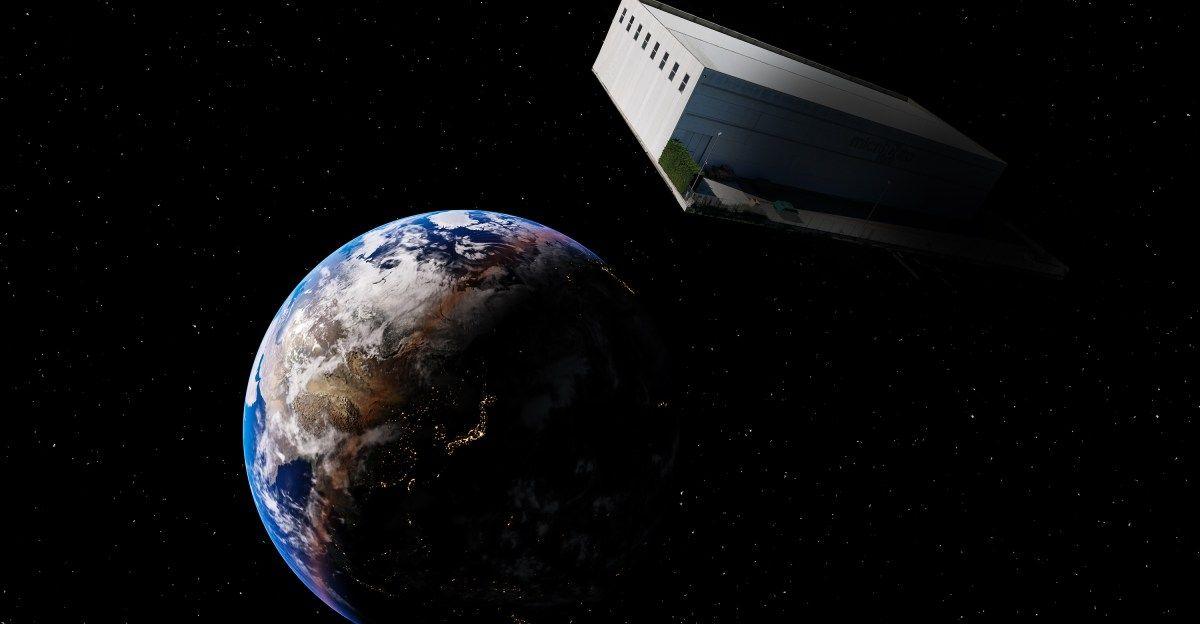
Google Plans Space Data Centers to Power AI with Solar Energy, Targets 2027 Launch
02 Dec 2025•Technology
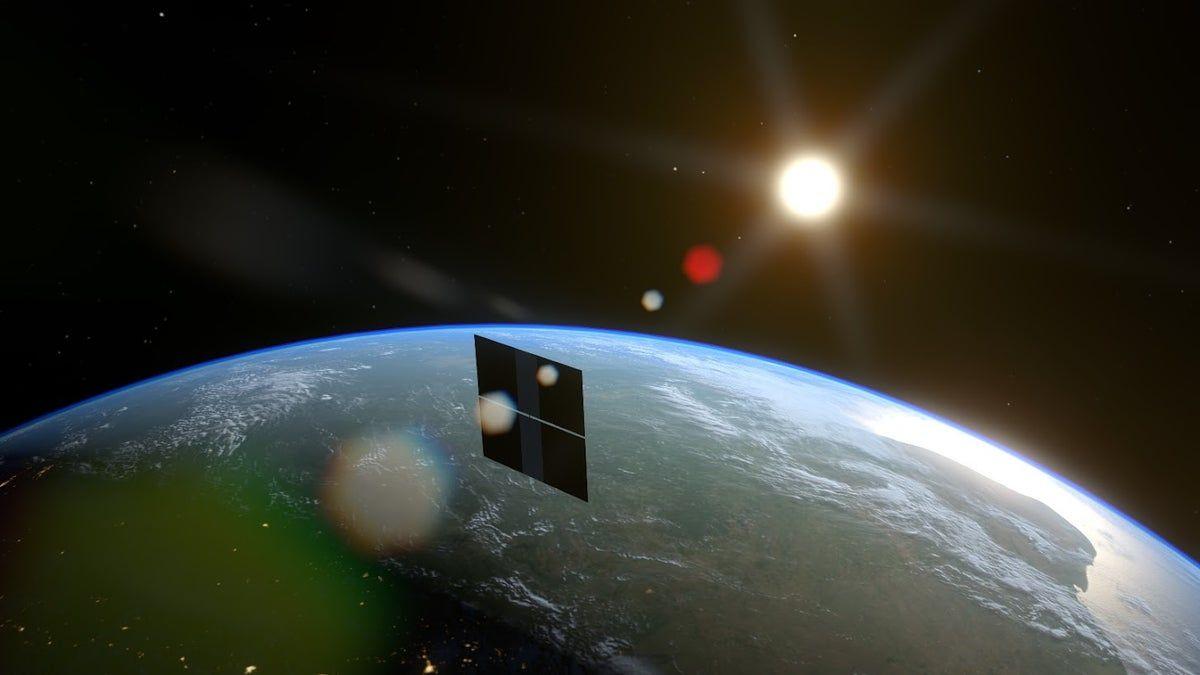
Recent Highlights
1
Google launches Gemini 3 Flash as default AI model, delivering speed with Pro-grade reasoning
Technology

2
OpenAI launches GPT Image 1.5 as AI image generator war with Google intensifies
Technology

3
OpenAI launches ChatGPT app store, opening doors for third-party developers to build AI-powered apps
Technology

